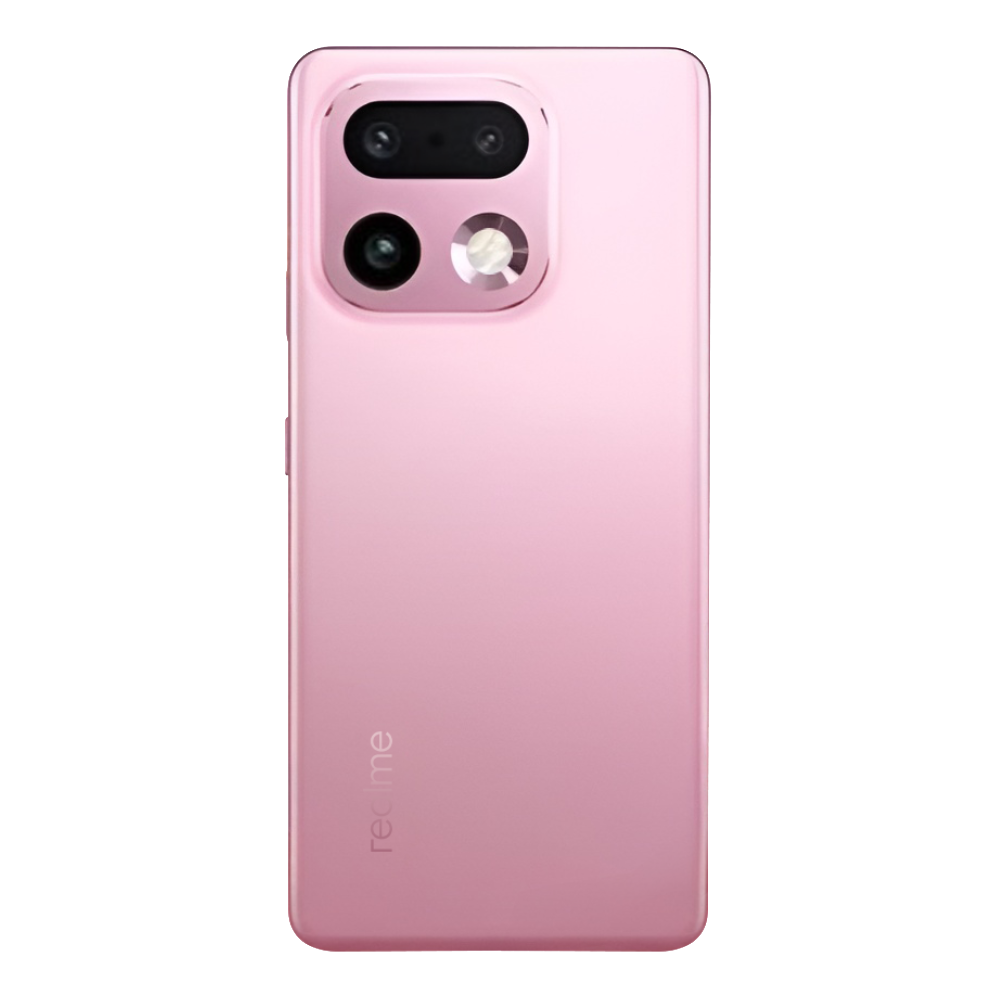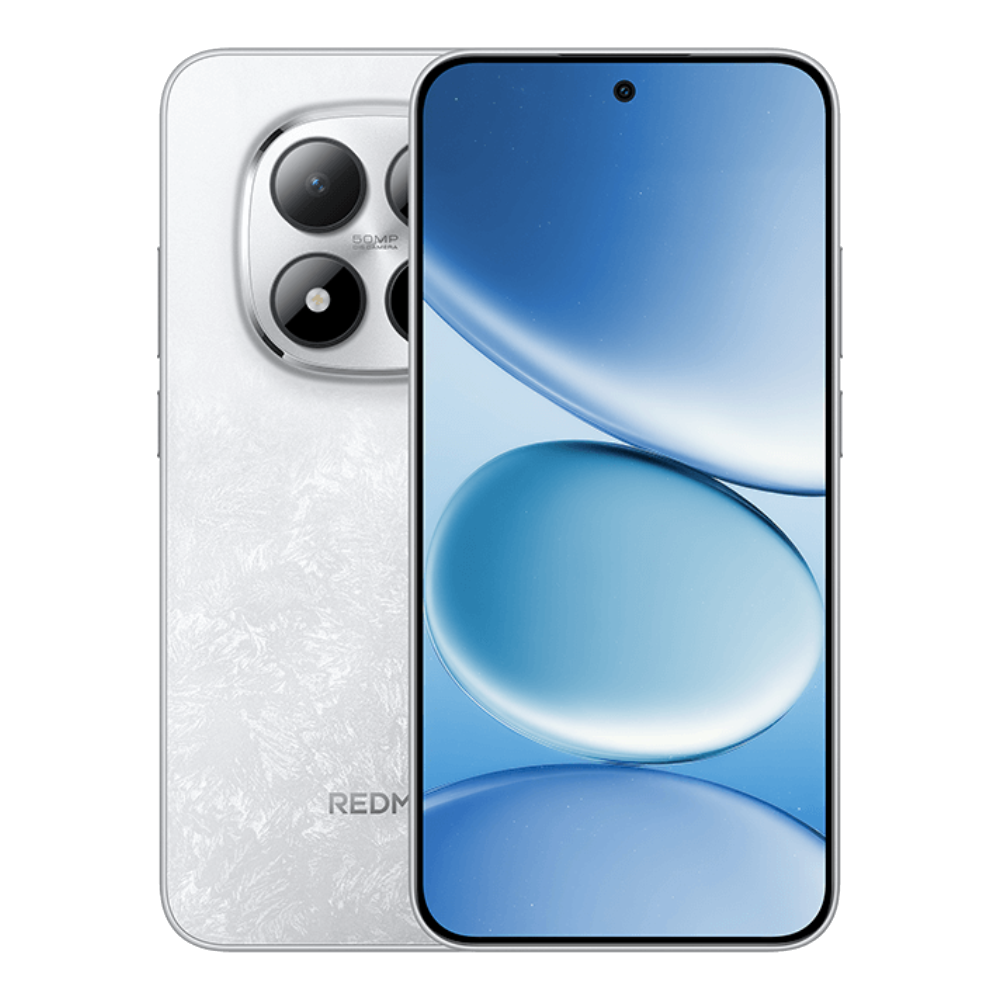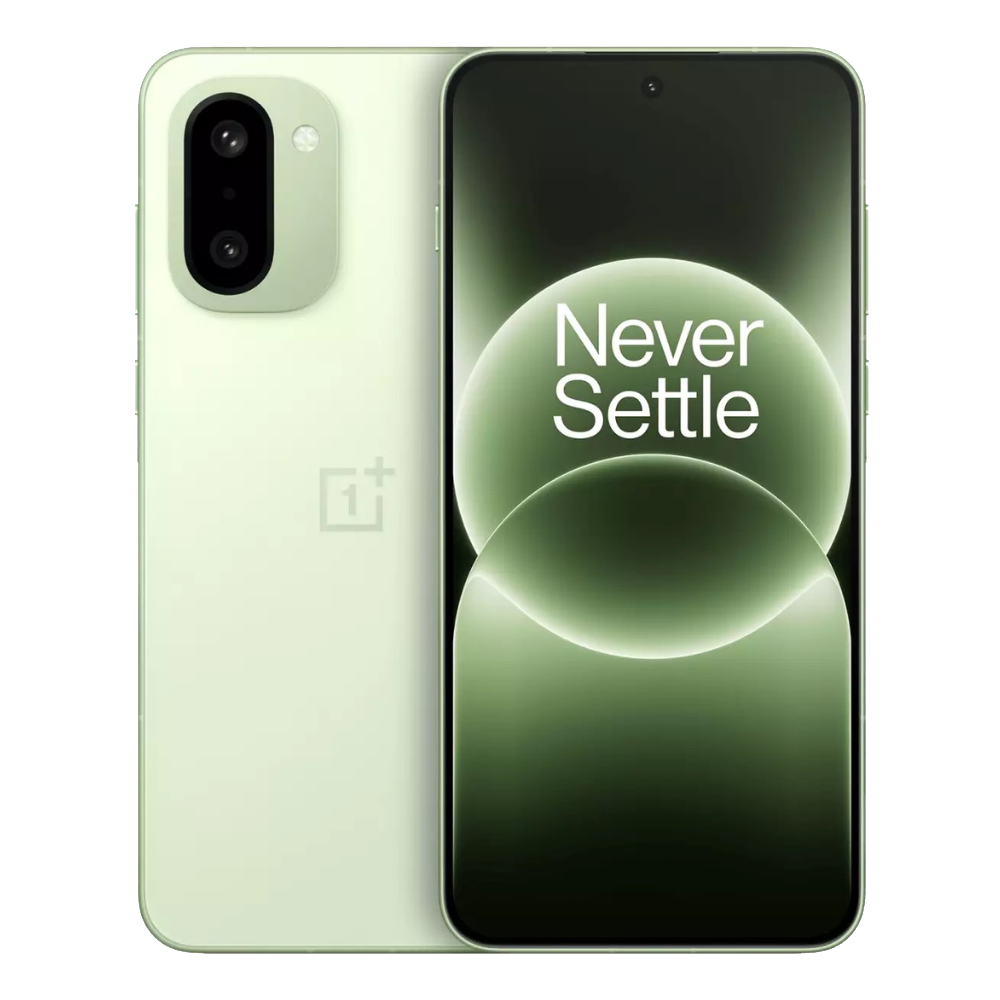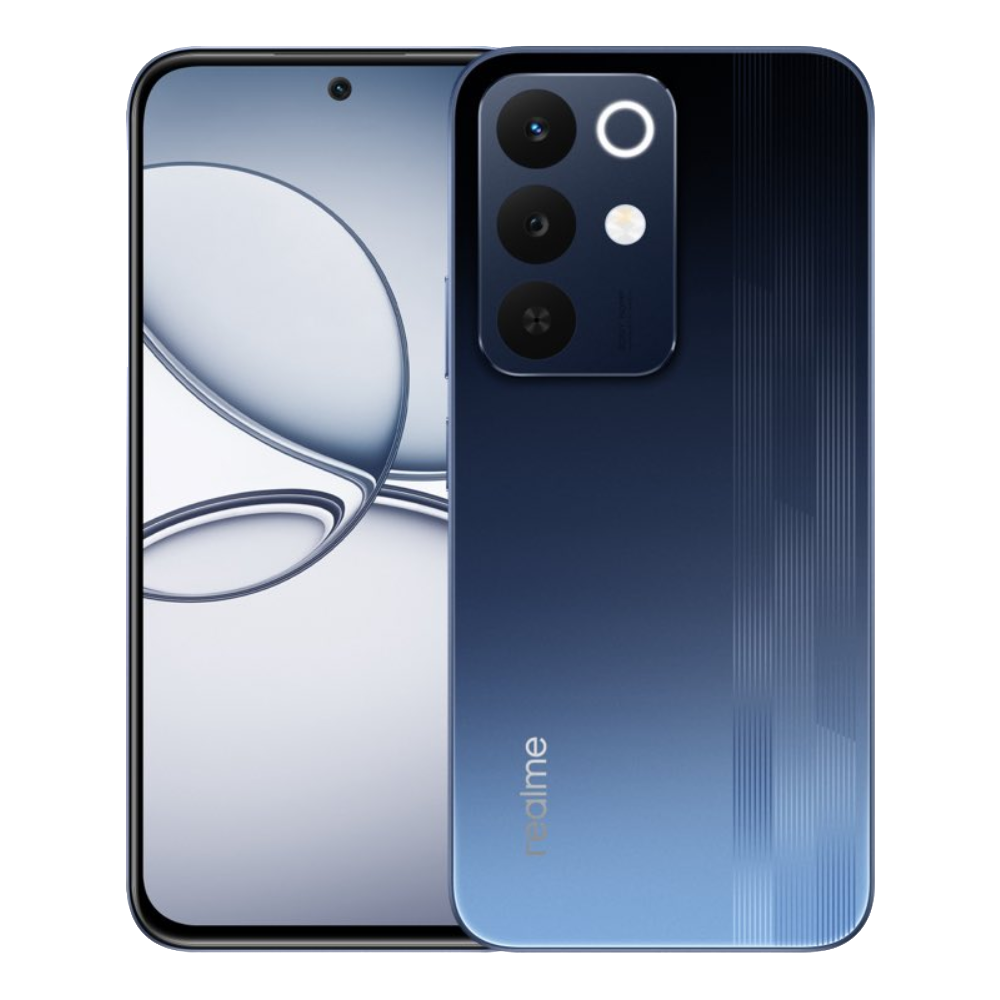
Beebom
Rating7
The Nothing Phone (3) is a bold and distinctive smartphone with its quirky Glyph Matrix feature, but the charm fades rather quickly. Its stellar display and clean Nothing OS software make for a pleasant everyday experience and performance is smooth enough for most tasks. However, the phone struggles to live up to its flagship pricing, with inconsistent cameras, underwhelming battery backup and some unnecessary cost-cutting on the hardware front. It's a phone that dares to look different and mostly succeeds, but the experience doesn't always match the promise.
Pros
Eye catching design
Clean software
Big, bright OLED display
Reliable performance
Cons
Bulky build hinders in-hand experience
Average cameras
Questionable battery life
Unreasonably pricey
The Nothing Phone (3) has been around for over three months at this point, and it still refuses to stay out of the spotlight, thanks to sudden price drops and loyalty deals. But, is it a smart buy after all? I've spent the last month using it as my daily driver, and here's my detailed Nothing Phone (3) review to answer that very question.
Nothing Phone (3) Unboxing
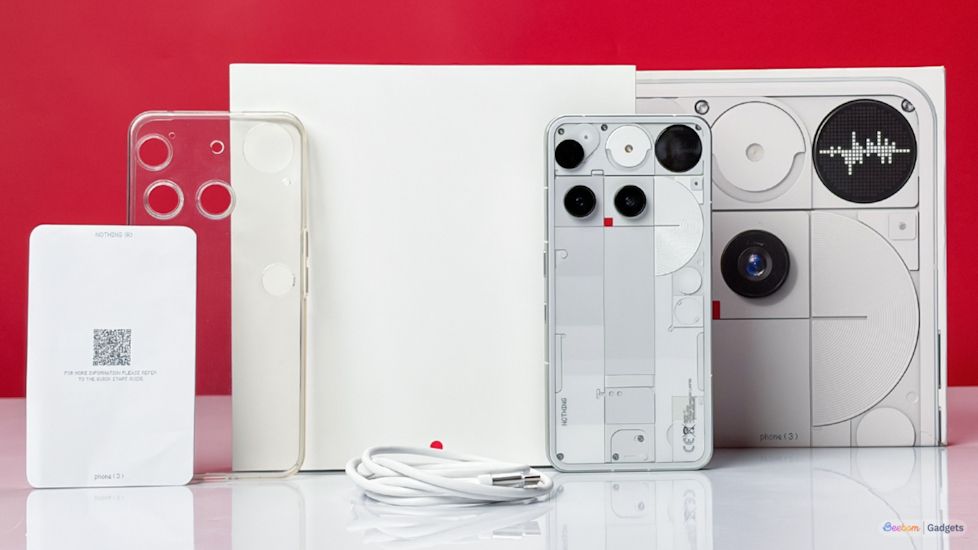
The Phone (3) box contents are nothing to put you in awe and alongside the phone itself, you get the usual:
- Nothing Phone (3) smartphone
- USB‑C to USB‑C cable
- Transparent case
- SIM Ejector Tool
- Documentation
Now, before we get into the detailed review, here's a quick look at the Phone (3) specs for your reference:
Nothing Phone (3) Key Details
- 1.5K AMOLED
- LTPO
- HDR10+
- OmniVision OV50H
OIS
4K@60fps
- Samsung S5KJN1
- 4k@60fps
- Adreno 825
- 65Watt (wired)
- Wireless Charging Supported
- 256GB (UFS 4.0)
- Gorilla Glass Victus (Back)
- Aluminium Frame (Side)
- IP68 (Dust and Water Resistant)
- 5 year(s) of OS Update
Nothing Phone (3) Design and Build
- 160.60 x 75.59 x 8.99mm, 218 grams weight
- Glyph Matrix made out of 489 mini-LEDs
- IP68 rating
Design is where the Nothing Phone (3) either lives or dies. I have used plenty of phones this year, but none have made me question everything like this one. Every time I pulled it out in public, I’ve had someone ask me, "What phone is this?".
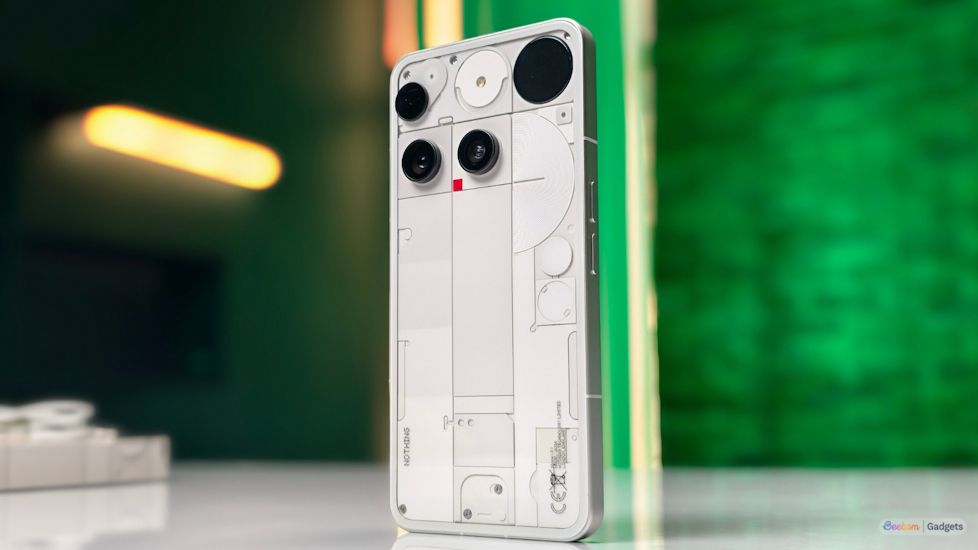
The transparent rear panel is as industrial as ever, and the entire aesthetic screams Nothing’s design DNA. It’s unapologetically geeky and while the off-centre periscope camera did unsettle my OCD at first, it somehow ended up feeling like part of the charm.
Then there’s the new Glyph Matrix, which is a reimagined version of the Glyph lights that put Nothing on the map. This time, it’s a cluster of 489 mini-LEDs neatly tucked into the top-left corner of the rear panel.
It’s smarter, more functional and capable of displaying battery percentage, timers and at times, even doubles down as a funky selfie viewfinder. Nothing has also thrown in Glyph Toys into the mix, letting you play mini-games like Spin the Bottle, Rock Paper Scissors and more. On paper, it’s a rather clear step forward.
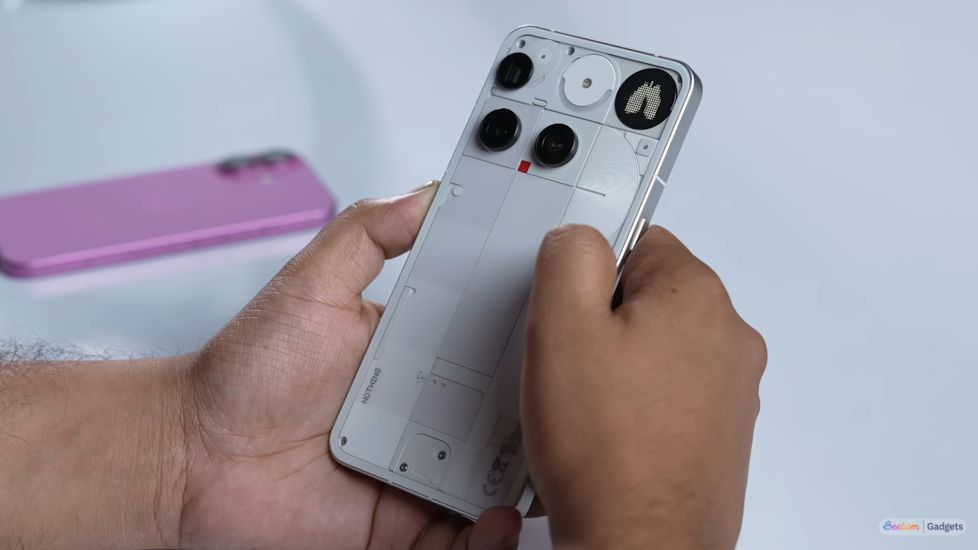
However, in real life, it’s still mostly a novelty. Sure, it was fun to show it off and was handy for a couple of days. But, eventually, I stopped flipping the phone over to check the Matrix and went back to having my phone face-up on a desk.
At 218 grams and 8.9mm thick, the Nothing Phone (3) is certainly not the most comfortable phone I’ve carried around. The flat edges also dig into my palm during those long gaming or binge-watching sessions on the metro. Despite having big hands, I've had trouble holding onto this one, especially when they got extra sweaty.
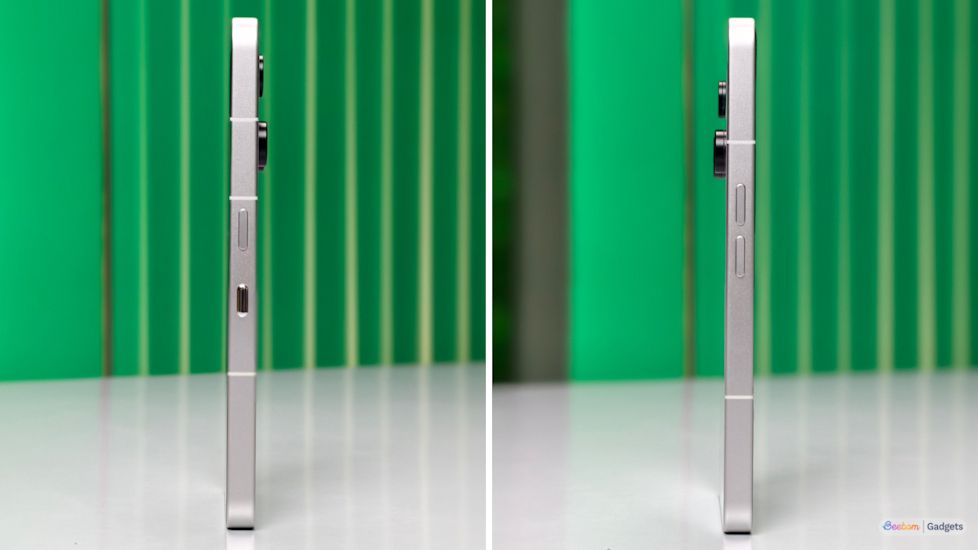
However, the aluminium frame and Gorilla Glass Victus give it this premium heft that made me use it without any case on. The buttons themselves are of very good quality and don't feel flimsy at all. I also like the placement of each of these buttons, as they are carefully placed and nicely spaced out on each side of the frame. There's also an IP68 rating to finally bring peace of mind to my clumsy self.
Nothing Phone (3) Display Quality
- 6.67-inch Flexible AMOLED display
- Corning Gorilla Glass 7i protection
- 4,500 nits of peak brightness, 1,600 nits HBM, 800 nits typical brightness (as per the brand)
The 6.67-inch OLED panel is one of the highlights of my time with the Phone (3). Watching HDR content on Netflix and YouTube is an absolute treat, with colours popping without looking cartoonish. Blacks are also quite inky and made watching Wednesday an absolute treat to the eyes.
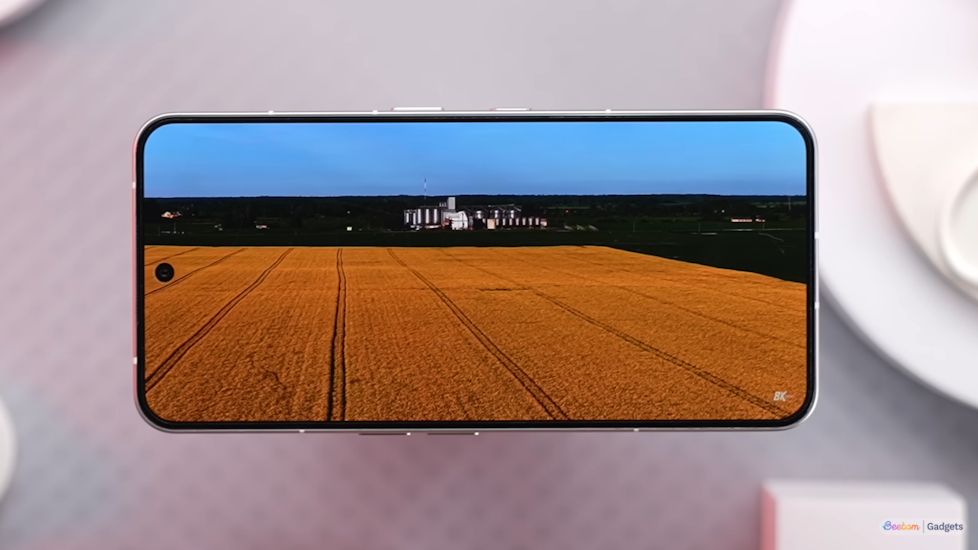
Besides, I never struggled to view the screen outdoors, even under Delhi’s harsh midday sun. Using the luxmeter at the office, I recorded around 1,700 nits of high brightness, which is slightly more than the 1,600 nits of claimed HBM.
There’s one compromise though and the panel uses LTPS instead of LTPO. This prevents the refresh rate from scaling efficiently, which causes a slight decrease in battery life (more on this later).
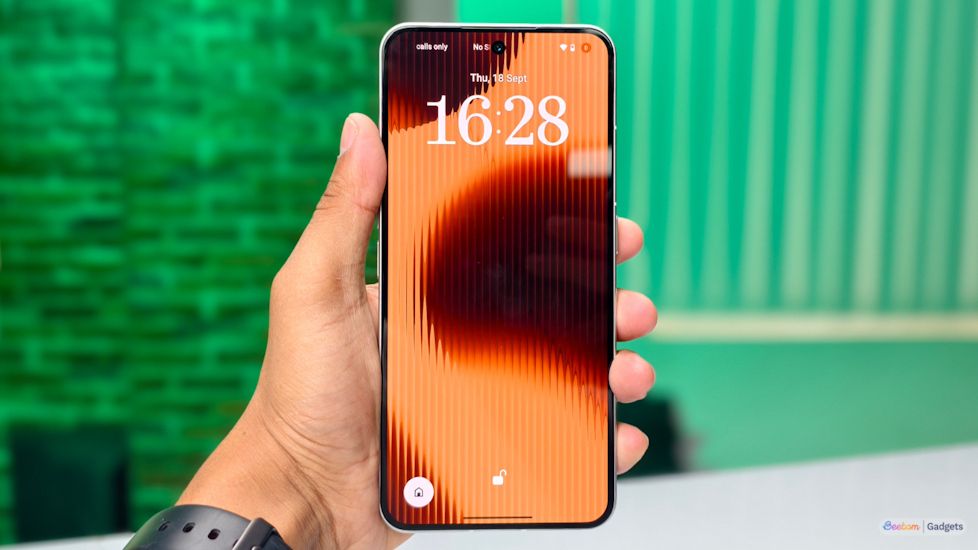
The stereo speakers round out the multimedia experience of the Nothing Phone (3) nicely. They’re loud, clear and have good audio separation. Although the bottom speaker is a tad louder, it doesn’t disrupt the experience. Watching movies or gaming without headphones felt immersive enough that I didn’t miss my earbuds.
While there is Gorilla Glass 7i protection on the display, micro scratches did appear on it after a couple of days of usage. So, I'd recommend getting a screen protector for sure.
Nothing Phone (3) Performance Tested
- Snapdragon 8s Gen 4 chipset
- Up to 16 GB RAM and 512 GB UFS 4.0 storage
Talking about the performance of the phone in this Nothing Phone (3) review, on paper, the Snapdragon 8s Gen 4 does look out of place. In a segment that's plagued by Snapdragon 8 Gen 3 and Snapdragon 8 Elite phones, the Phone (3) doesn't seem like a worthy contender.
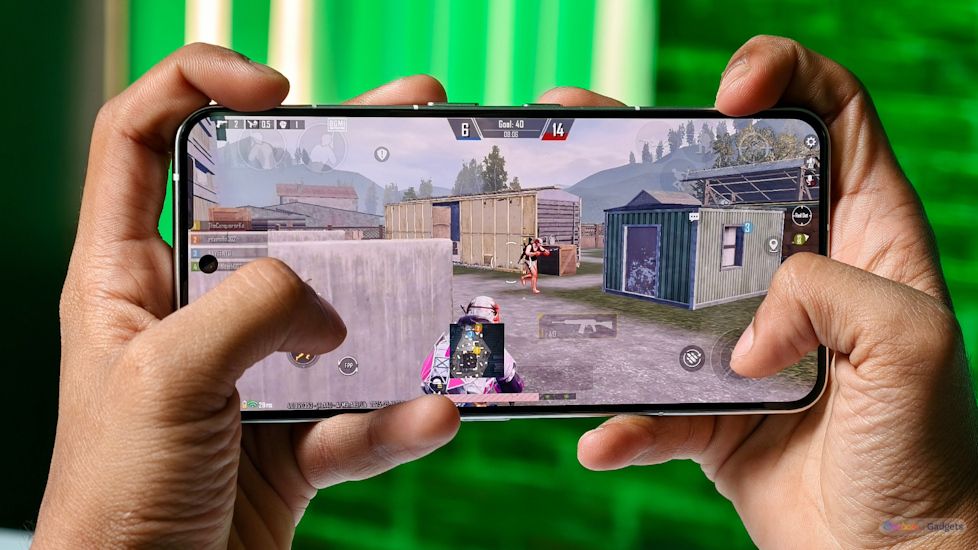
However, the Snapdragon 8s Gen 4 with up to 16 GB of RAM has been more than capable of handling my daily grind. Apps open instantly and multitasking is smooth. However, I did notice that the RAM management was rather poor on the phone. I once had around 25 or so apps open in the background and after just a while of leaving them in the background, most of those apps restarted.
I also ran some benchmarks and this is where you start to see the Snapdragon 8s Gen 4 vs Snapdragon 8 Elite difference, as the latter absolutely mops the floor with the former. While I never felt like I was missing out on performance in real-world use, I knew this isn't the best out there. With that said, here’s a quick rundown of the benchmarks:
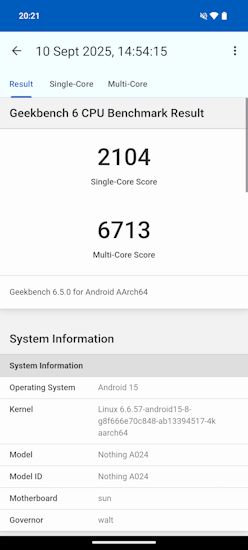
With that out of the way, I pushed the Nothing Phone (3) with some Genshin Impact on high settings. While it mostly held on to 60 FPS, I did notice some dips during intense battles. Call of Duty Mobile and BGMI, on the other hand, ran flawlessly at 120 FPS.
Heat management is decent, though after about 30 minutes of gaming, the area near the camera module got noticeably warm. It never became uncomfortable per se, but it’s something I kept an eye on.
What bothered me, though, was the USB-C port. It’s still stuck at USB-C 2.0 speeds, which feels rather outdated in 2025. I find myself transferring a massive chunk of photos and videos from the phones I’m testing to my laptop, and the process was painfully slow. For a phone that costs this much, that came across as a frustrating limitation, and it should have had USB-C 3.0 or above.
Nothing Phone (3) Software and Updates
- Android 15-based Nothing OS 3.5
- Five years of major OS updates, seven years of security patches
Out of the box, the phone runs on Nothing OS 3.5 on top of Android 15 and it feels refreshingly clean. I’ve always appreciated Nothing’s minimal, bloatware-free and visually distinct approach to software.
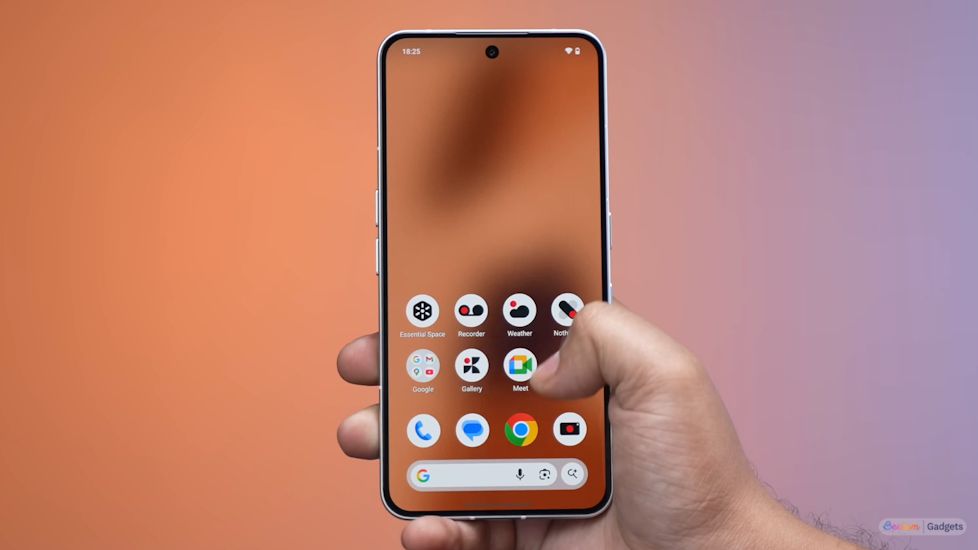
The monochromatic icons and dot-matrix widgets do give the interface a cohesive look and the animations feel deliberate rather than flashy. While I did miss a proper haptic integration in the UI, it was mostly a good experience overall with the Nothing Phone (3).
I particularly enjoyed using Essential Space, which can be easily summoned by double-tapping the Essential Key. Now, with just a single tap on the button, you can feed it screenshots or photos to get back to them later.
The feature acts as a quick-access hub for not just these screenshots, but also voice notes and clipboard content as well. Given how I tend to forget things quickly and the amount of things I need to remember on a daily, the Essential Space came in as a safe haven. Additionally, Nothing has also given it superpowers, like the ability to simply flip your phone and start recording audio.
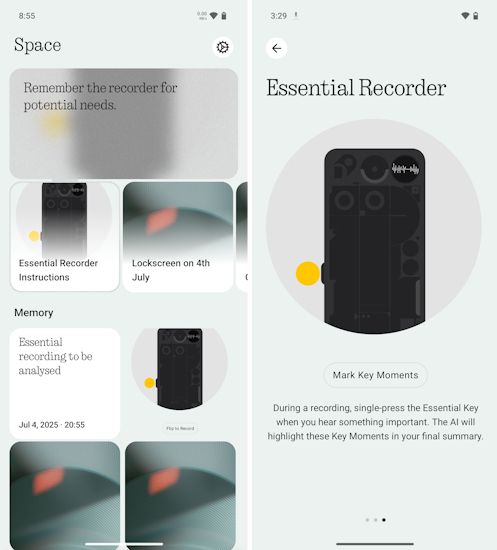
Nothing promises five years of OS updates and seven years of security patches for the Phone (3). That’s solid, though Samsung and Google still edge it out with longer commitments. Still, for most buyers, this is more than enough to keep the phone relevant for years to come. In fact, the Phone (3) is a part of the Nothing OS 4.0 supported devices list and is one of the first phones to receive the open beta update.
Nothing Phone (3) Camera Tested
- 50 MP OmniVision OV50H primary rear camera sensor
- 50 MP Samsung ISOCELL JN5 3x periscope telephoto, 50 MP Samsung ISOCELL JN1 ultrawide
- 50 MP Samsung ISOCELL JN1 selfie shooter
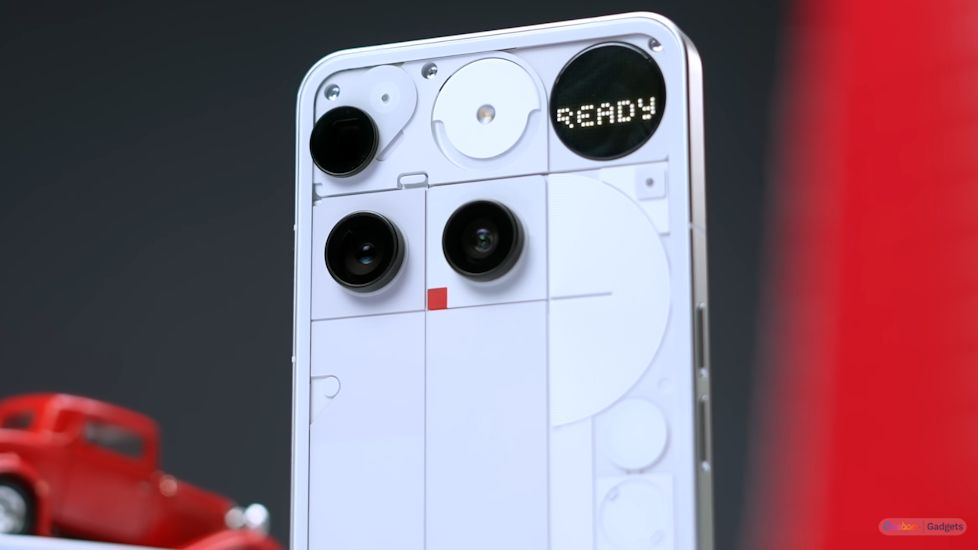
The 50 MP primary camera on the Nothing Phone (3) delivers solid results across most conditions. Daylight shots are crisp and well-balanced, with realistic colour tones all around. There’s also minimal oversharpening, with decent dynamic range. However, I did notice that the HDR can be occasionally aggressive with highlights. The OIS does its job well and even quick handheld shots turn out sharp. It’s a dependable primary shooter, if not expectation-shattering.



As for the 50 MP periscope lens, it is a welcome upgrade and a genuine step forward for Nothing. Images at 3x look sharp with pleasing contrast. Digital zoom softens details quickly though and those fine textures get lost. Low-light performance also dips and those shutter delays are rather noticeable. Still, it adds meaningful versatility that the Phone (2) lacked.
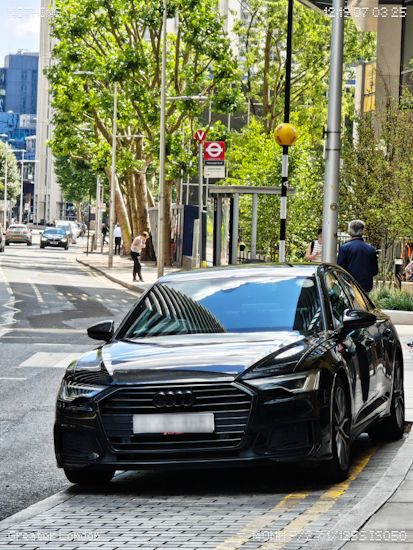


Talking about the ultrawide of the Phone (3), it produces good colour consistency in bright light. However, those details drop sharply toward the edges. While it’s mostly alright, there are some occasional exposure mismatches with the primary sensor.
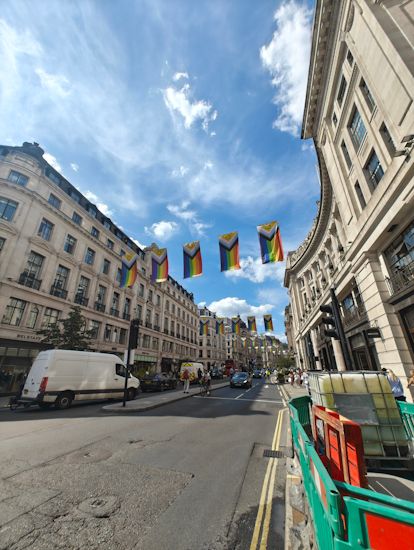


Things get pretty unreliable at night. While the main sensor holds its own and offers mostly noise-free shots with decent colour accuracy, the telephoto and ultrawide falter heavily. There’s quite a bit of noise and blur even with Night Mode engaged and that’s disappointing. It’s fine for casual shots, but not the phone’s strongest suit for sure.

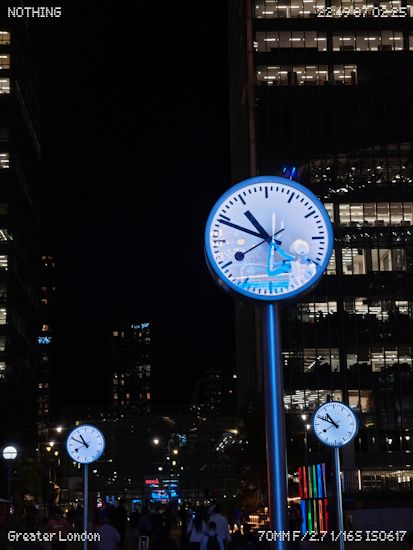

When capturing human subjects, the Nothing Phone (3) has a hard time managing skin tones well. At times, it can get too contrasty, while other times, washed out. There's a severe lack of consistency here and neither are the details retained that well. However, there's some solid edge detection and background blur at play here.



Selfies come out good with the 50 MP shooter at the front, especially in daylight. Details are retained well and skin tones, exposure are accurate enough. The portrait mode does offer great depth mapping and edge detection. However, indoors, I did notice that it relies on heavy processing, softening textures and sometimes muting colours.



As for videos, the Nothing Phone (3) can capture 4K @ 60 FPS videos through both the front and rear cameras, which is a nice bonus for vloggers.
Nothing Phone (3) Battery and Charging
The Indian unit of the Phone (3) packs a bigger 5,500mAh silicon-carbon unit and during my testing, I found it to be surprisingly unreliable.
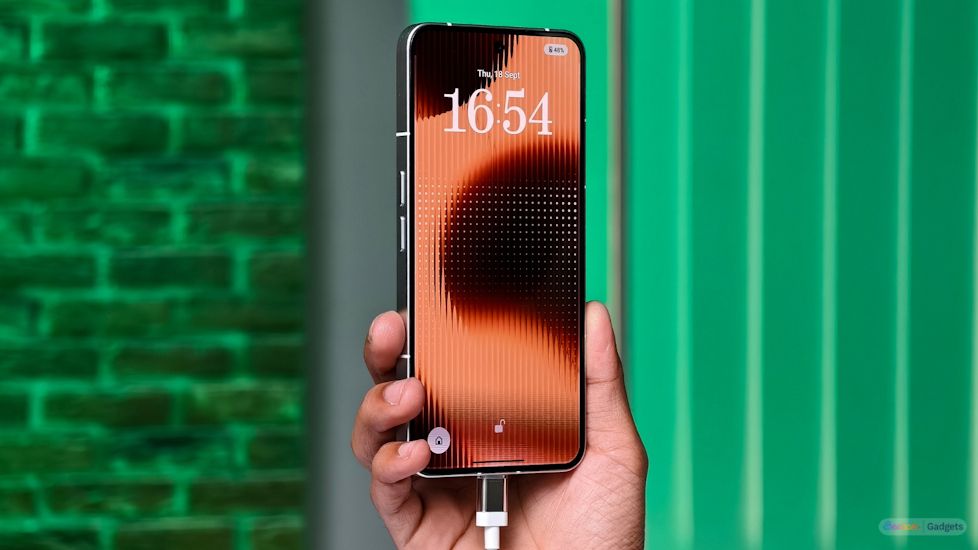
The phone was struggling to deliver over 5 hours of screen-on time in normal usage, while ideally, it should be capable of pushing to around 7 hours without breaking much sweat. For reference, my normal usage includes having several Chrome tabs open, browsing through X and Feedly, texting aggressively on Slack and WhatsApp and getting around an hour or so of CoD Mobile in.
With lighter use, I could stretch it to 30 minutes more at best. If I pushed the phone too hard and stayed up playing CoD Mobile with my friends for three or so hours, it would last me a maximum of 4 hours.
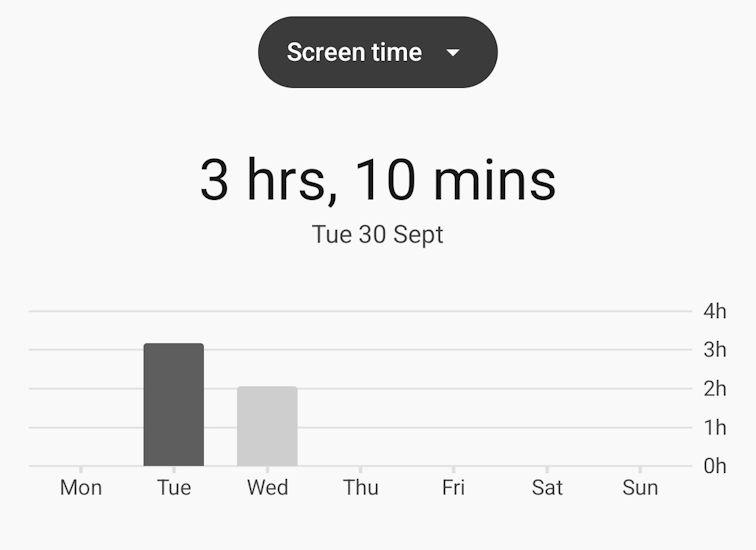
Thankfully, the charging is fast enough to not complain much about it. The 65W fast charging support topped it up to 100% in under an hour.
Bottom Line: Should you buy the Nothing Phone (3)?
The Phone (3) is a fascinating contradiction which tries to reward loyalty while testing it at the same time. The Rs 45,000 loyalty discount on the original Rs 79,999 price tag gave long-time users an exclusive deal but also left early buyers frustrated. With the Phone (3), Nothing seems to be trying to enter the flagship space with a phone that doesn't quite justify the flagship price.
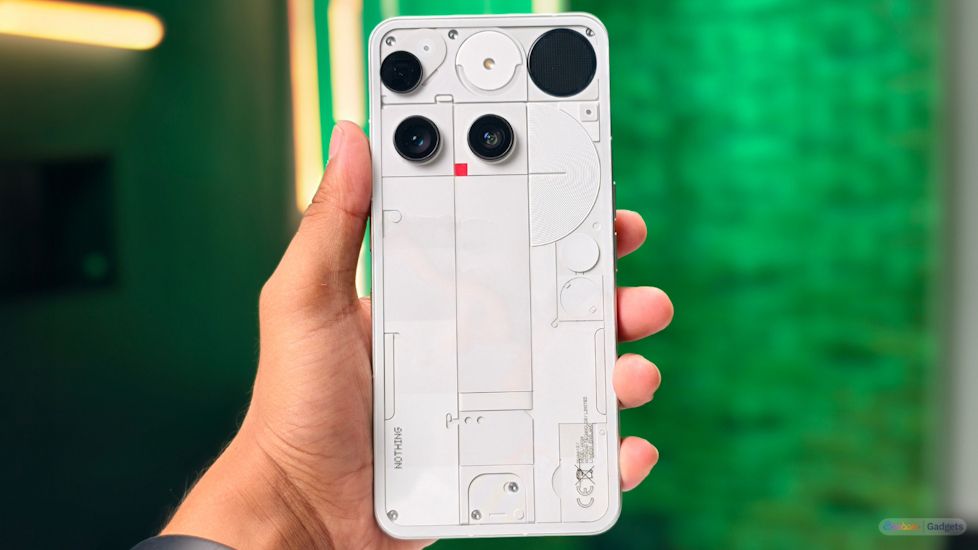
You can get the iQOO Neo 10 powered by the same processor for under Rs 35,000, if performance is what you primarily need. At its Rs 79,999 price tag in India, the Phone (3) is unnecessarily competing against the Vivo X200 Pro, Galaxy S25, Pixel 9 and iPhone 16. Besides, for much less, when there are options like the OnePlus 13, Nothing's Phone (3) becomes an incredibly hard sell.

| Partner | Offer Applicable for | Offer Value | Final Value |
|---|---|---|---|
| Flipkart SBI | Credit Card | ₹3,999 cashback | ₹76,000 |
| Flipkart Axis Bank | Credit Card | ₹3,999 cashback | ₹76,000 |
| Flipkart Axis Bank | Debit Card | ₹750 cashback | ₹79,249 |
| Flipkart Bajaj Finserv Insta EMI | Credit Card(EMI) | ₹400 off | ₹79,599 |
Disclaimer: The price & specs shown may be different from actual. Please confirm on the retailer site before purchasing.


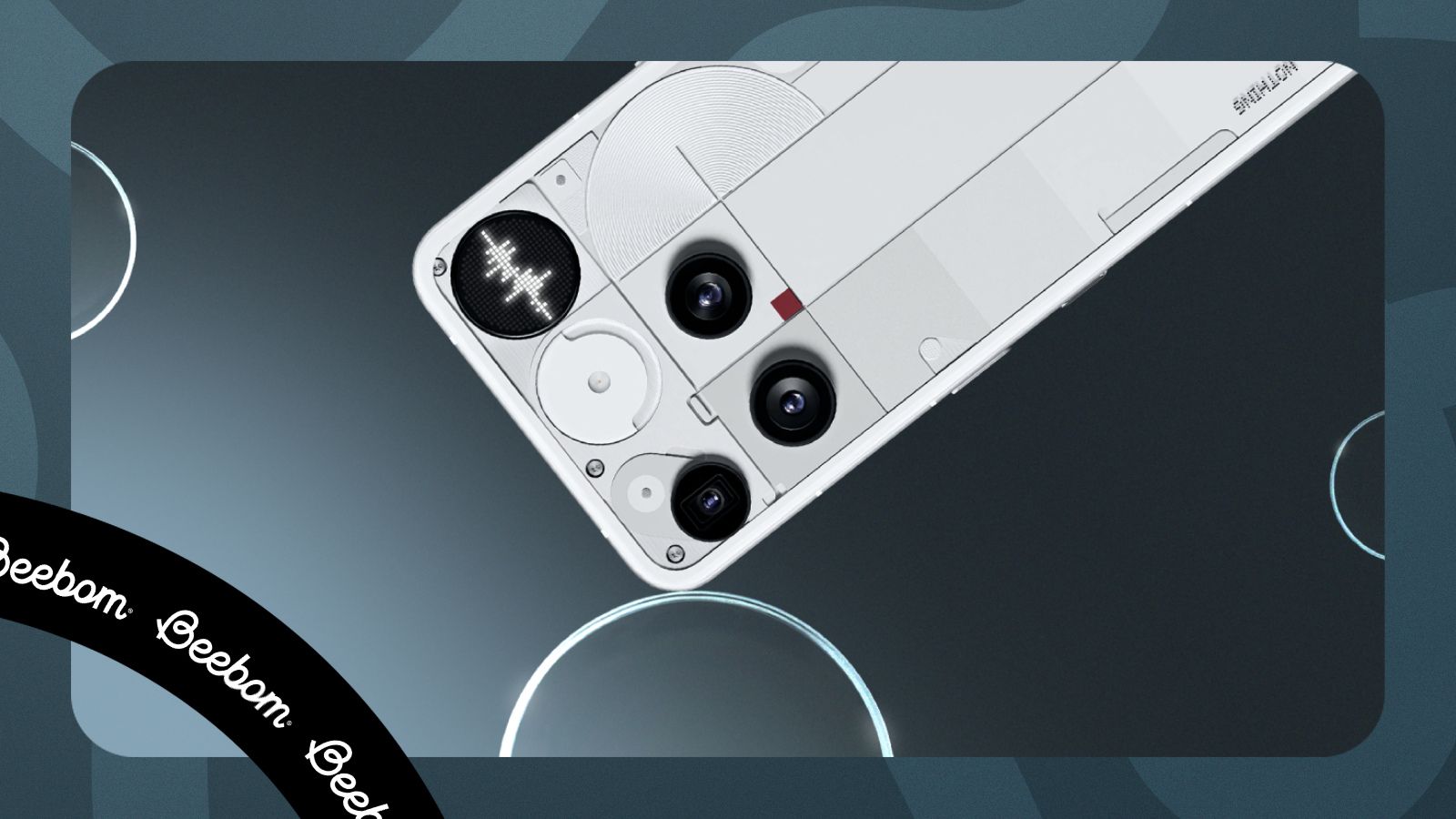
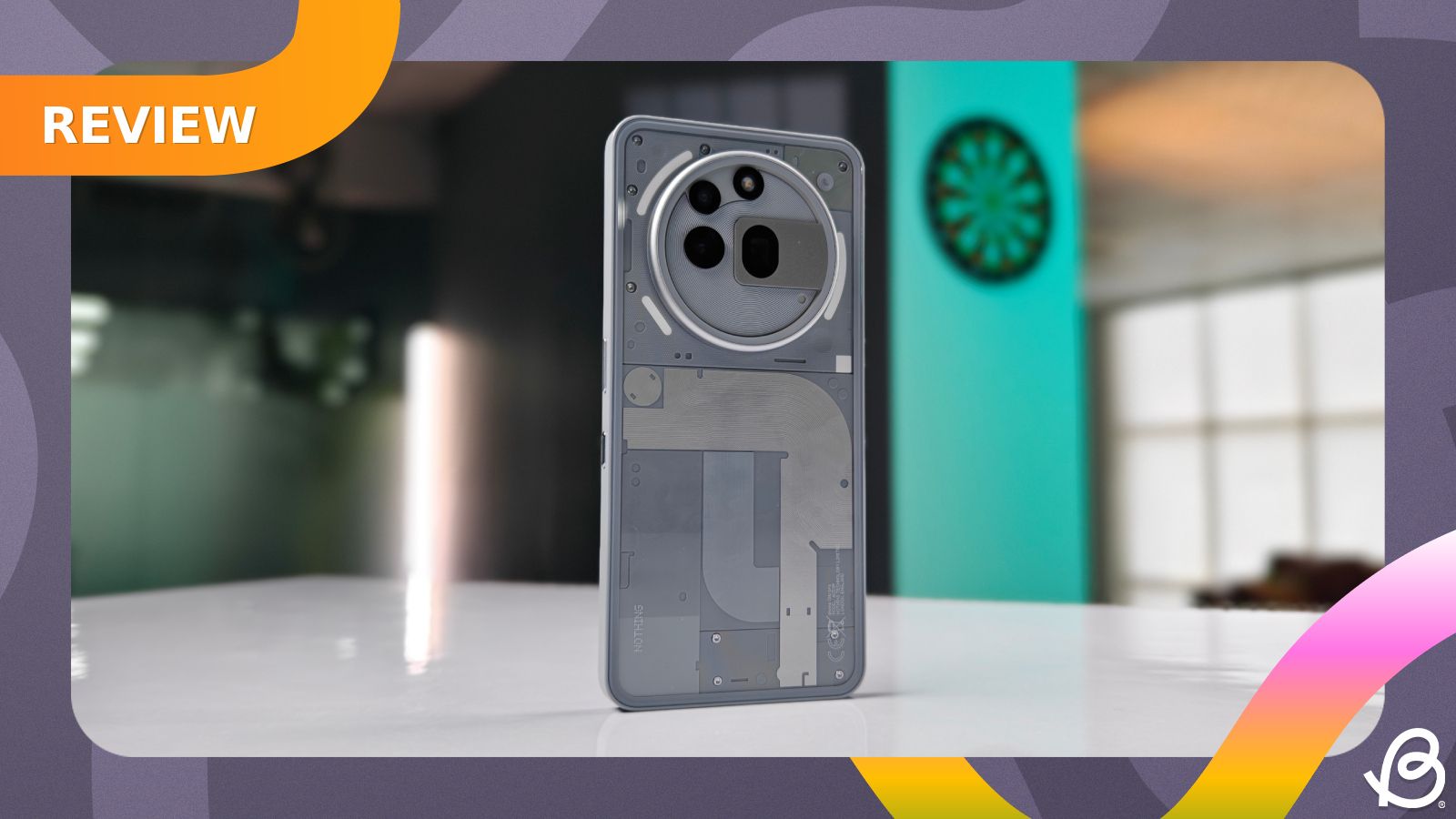
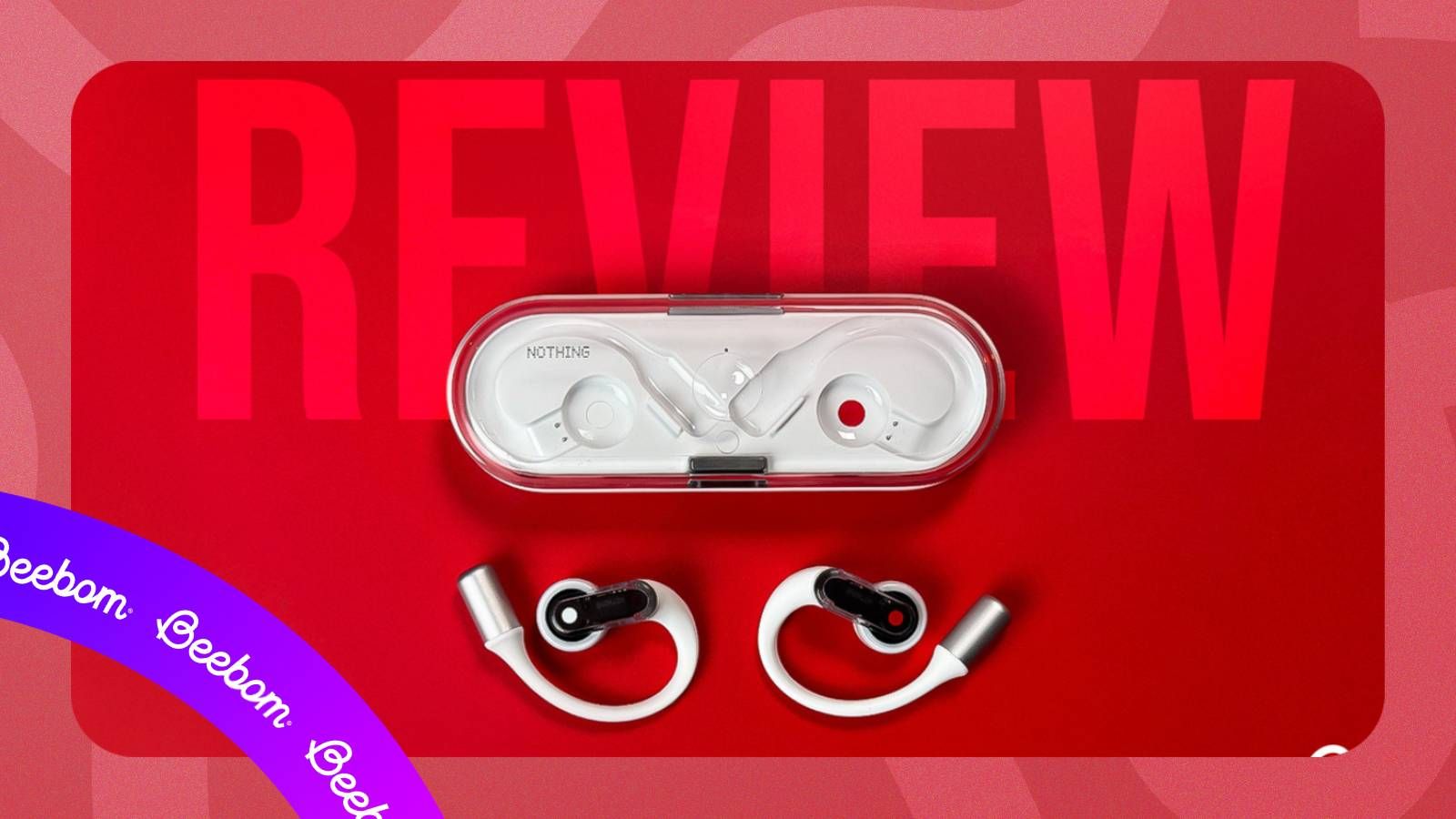
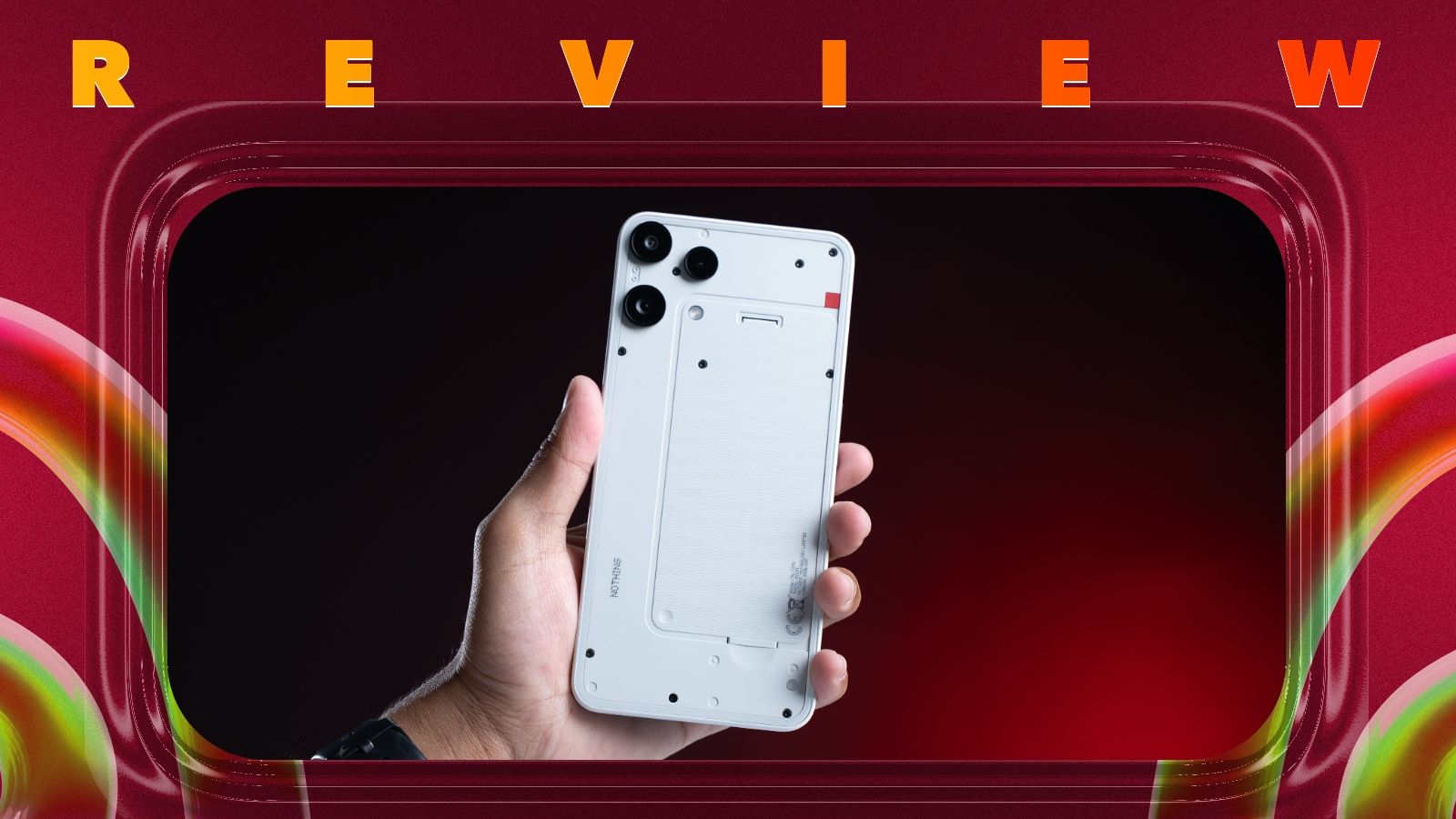
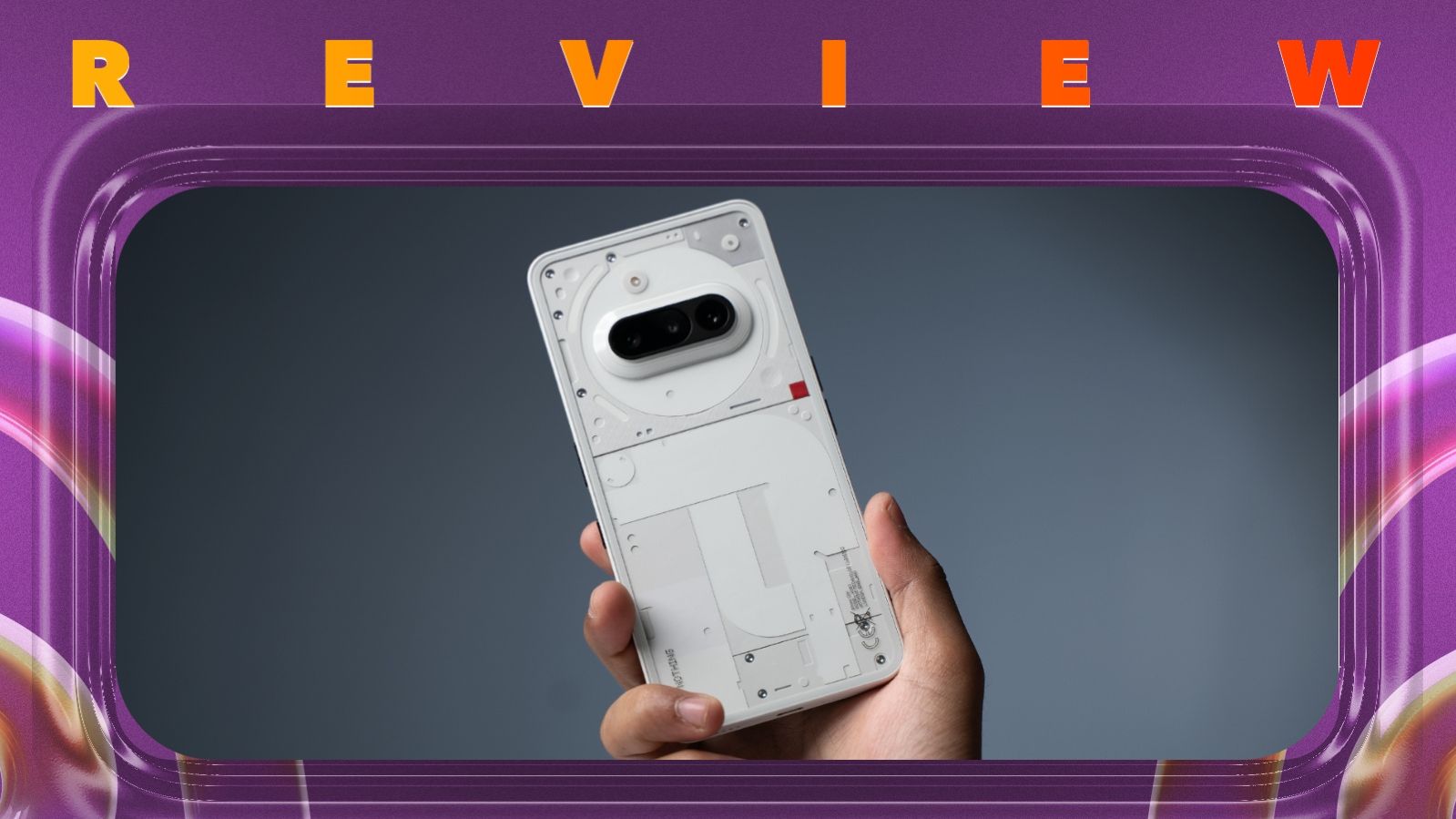
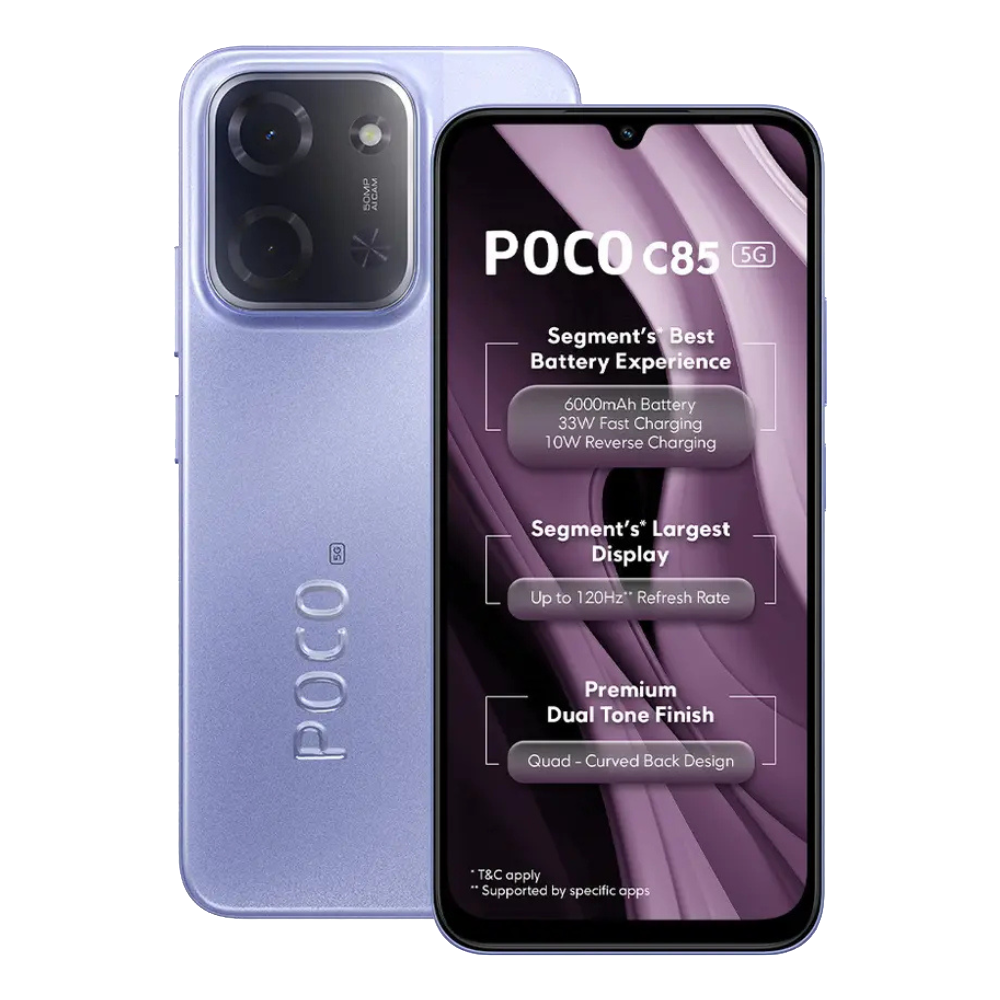

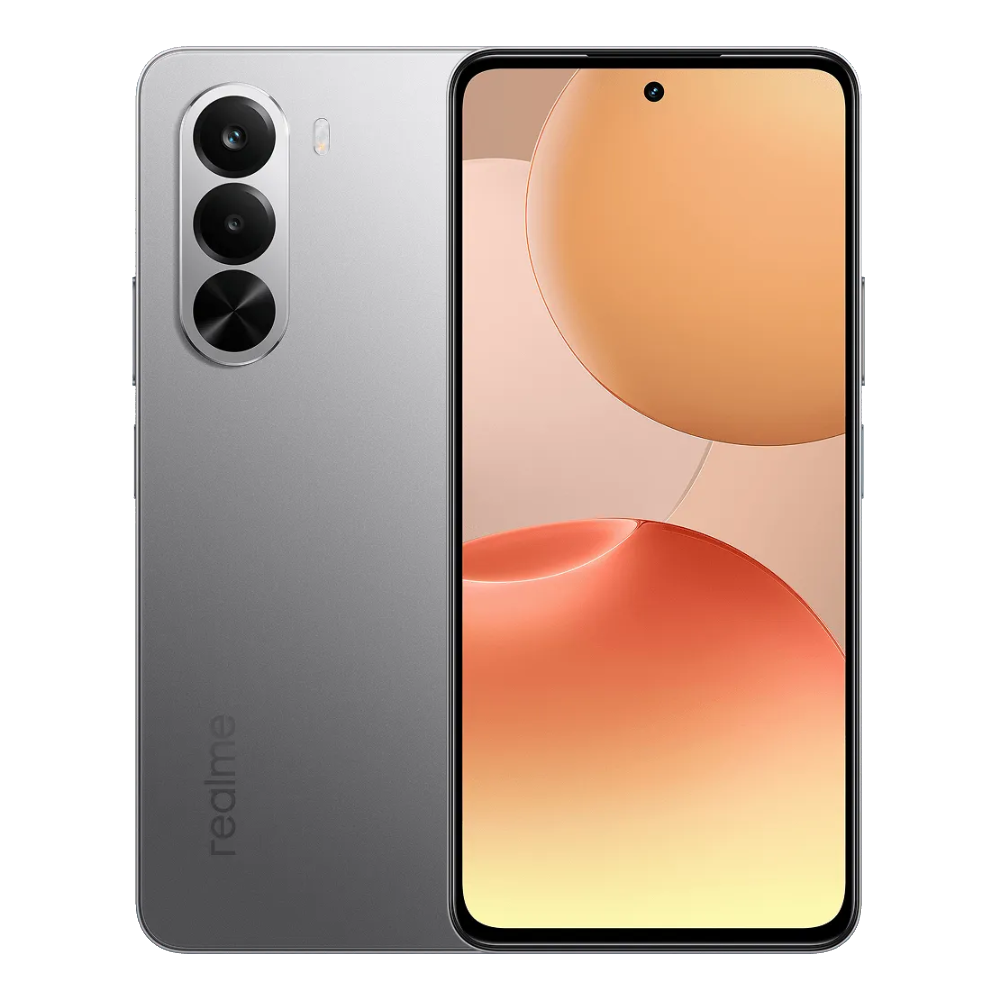
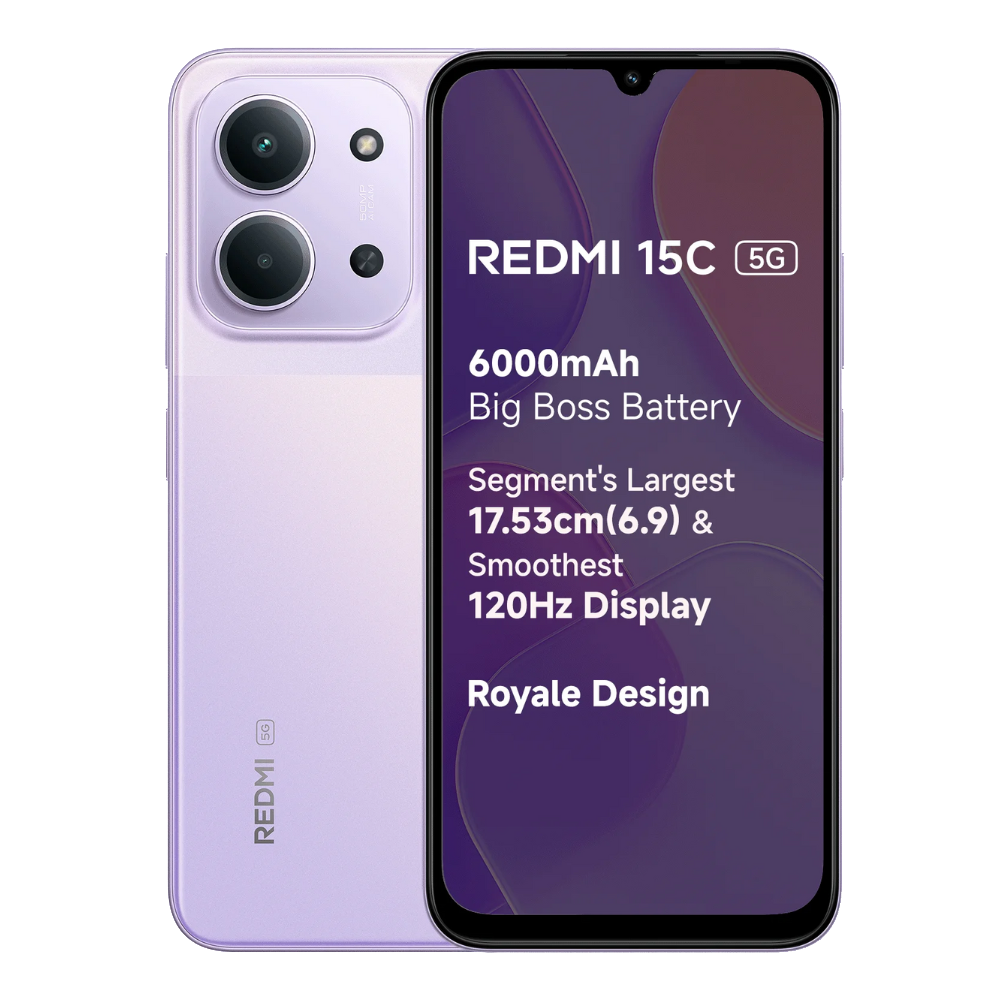
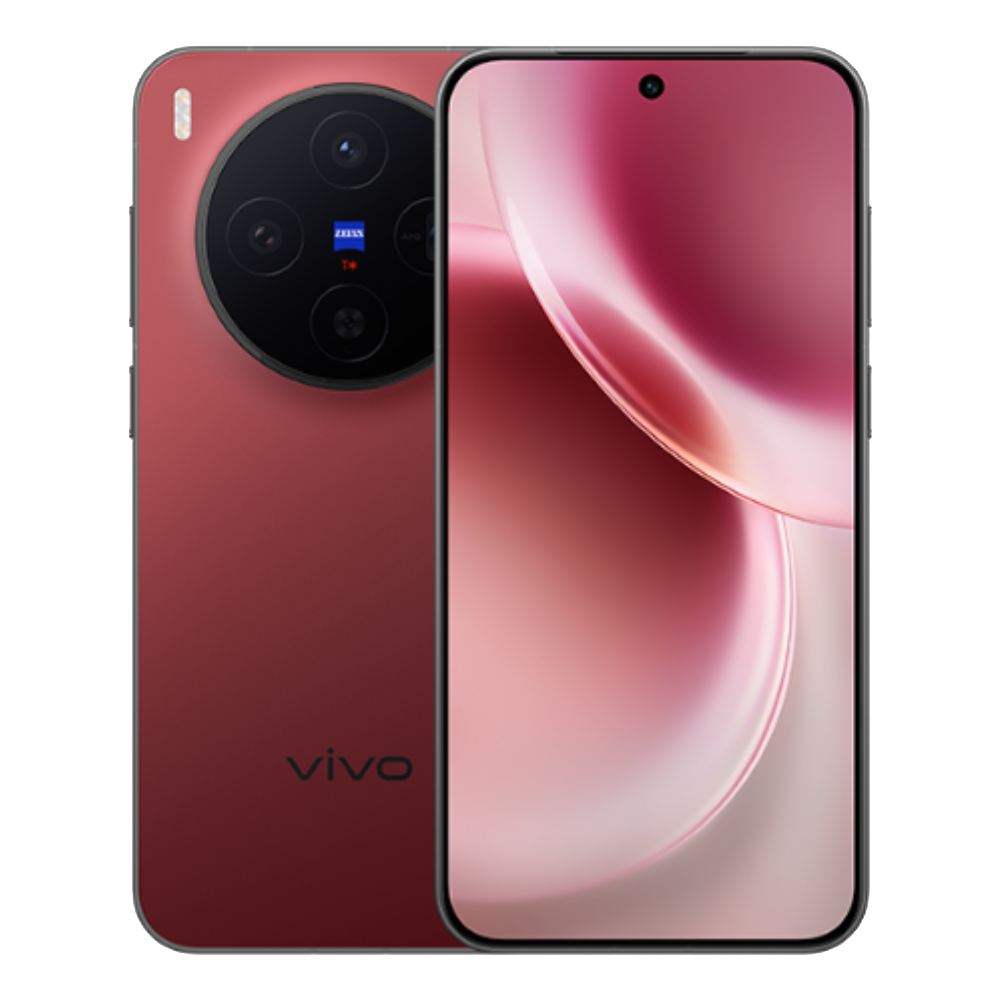
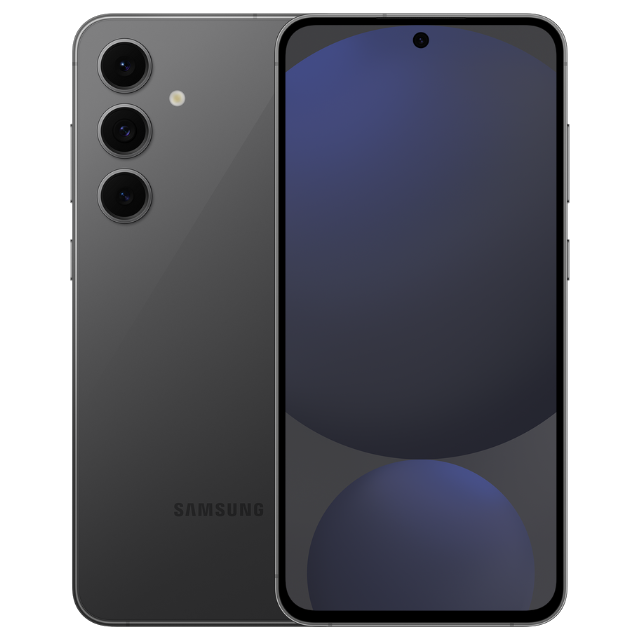
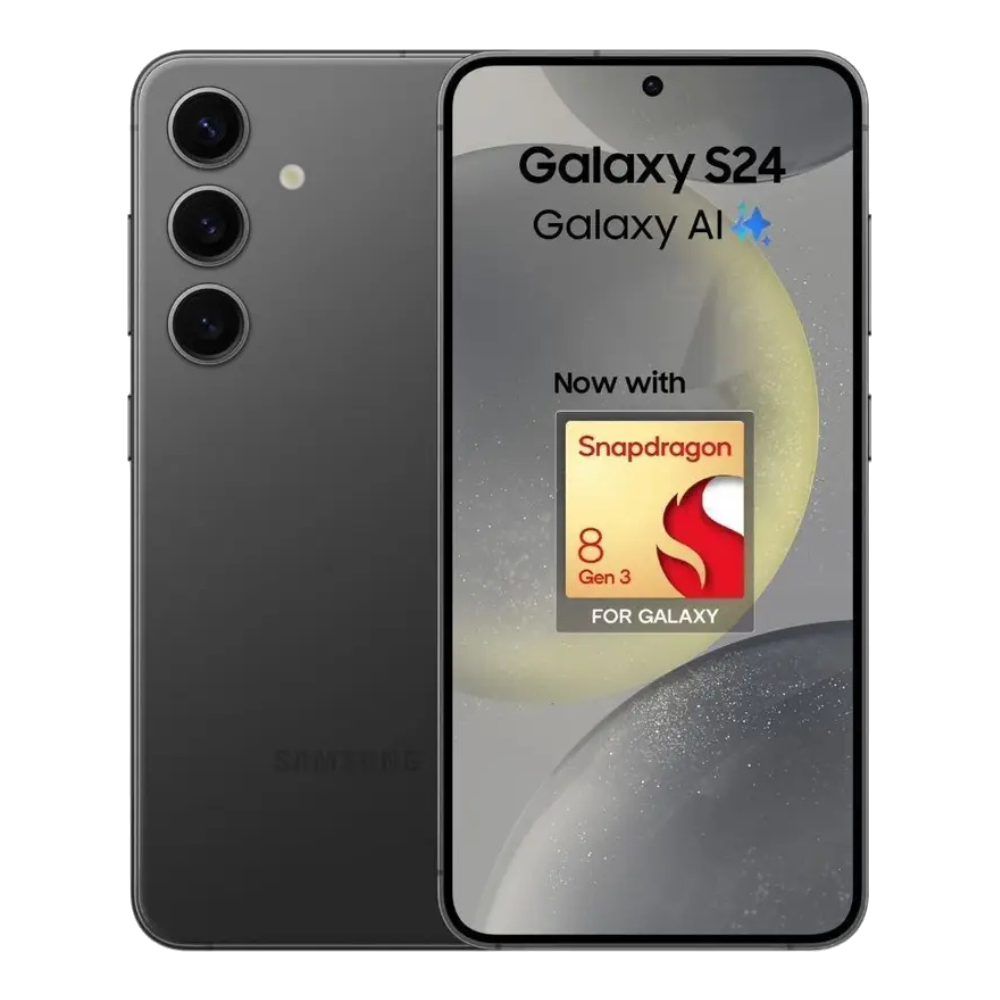
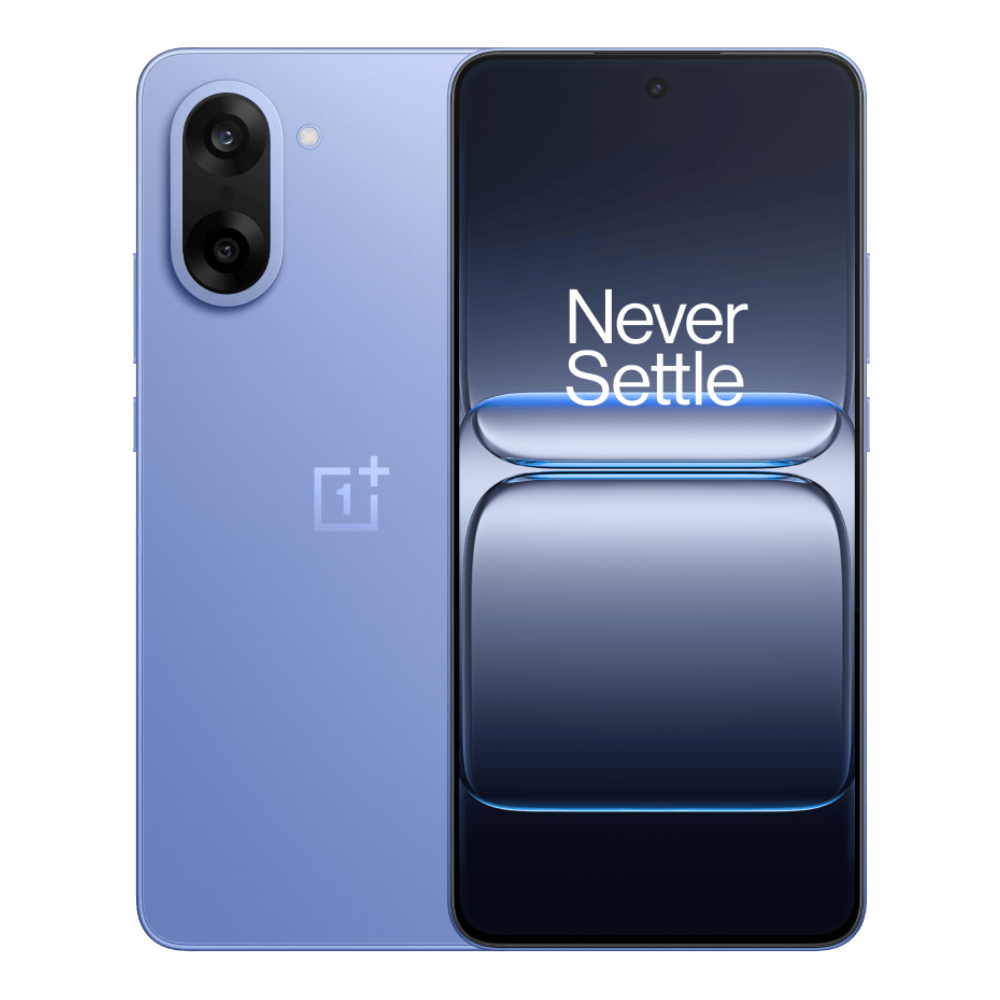
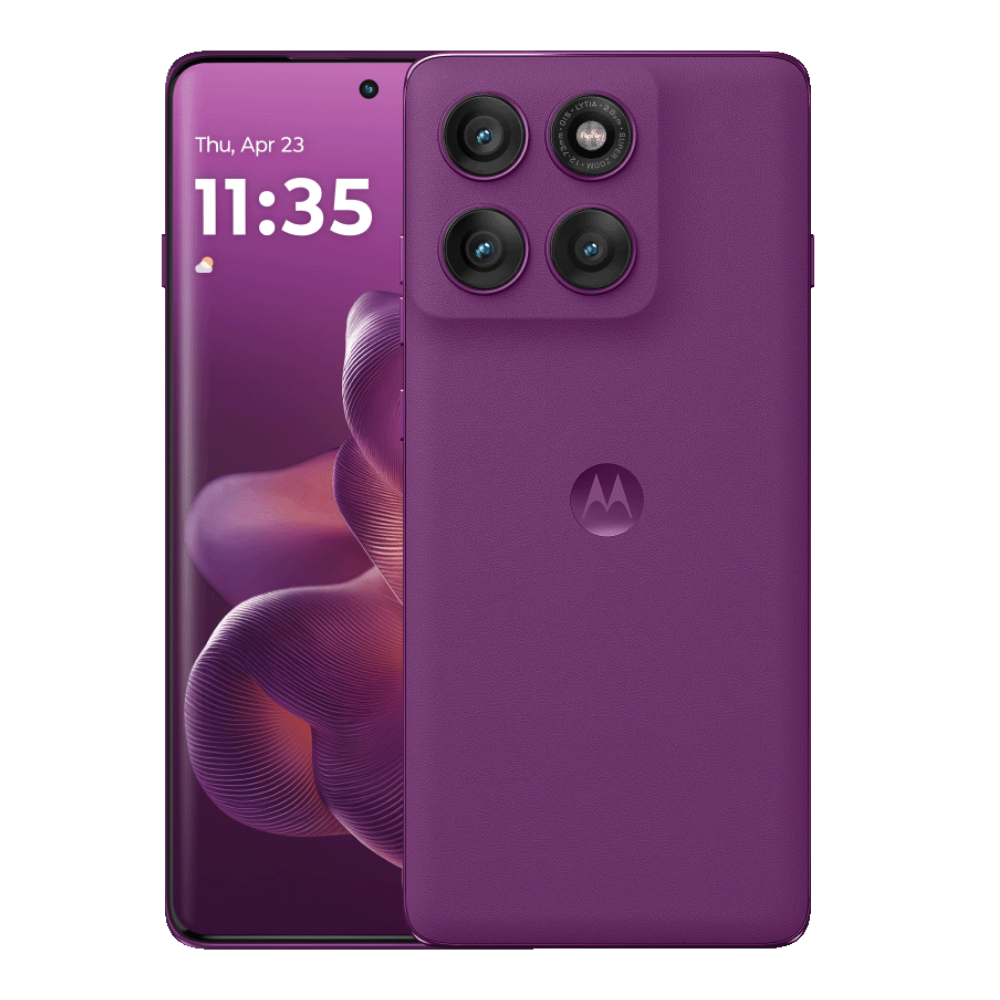
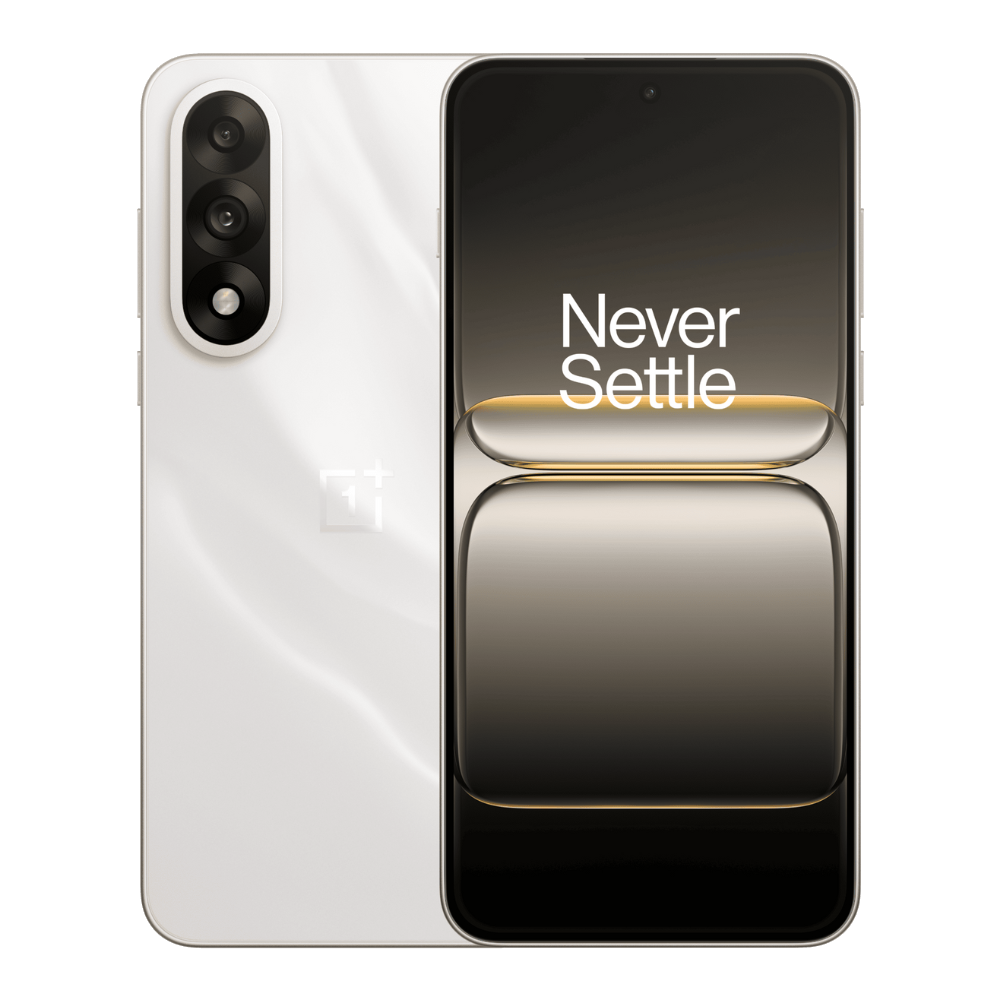
.png)
